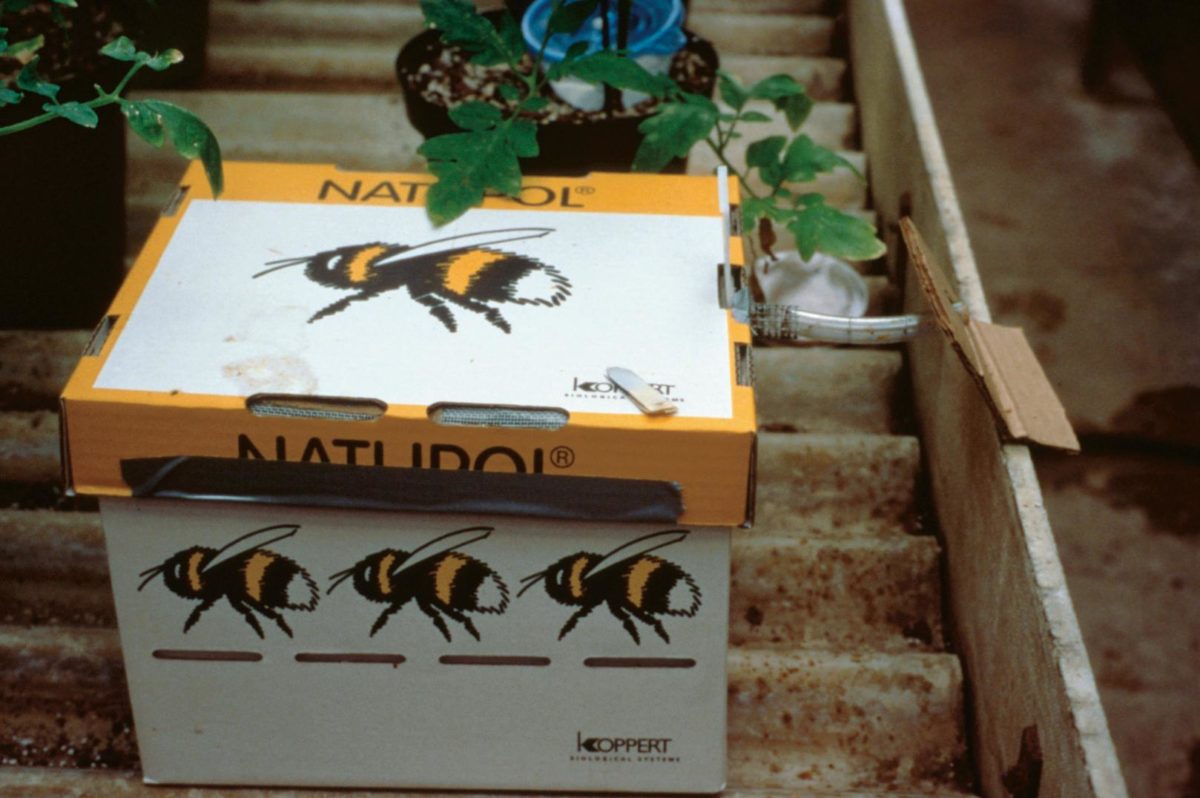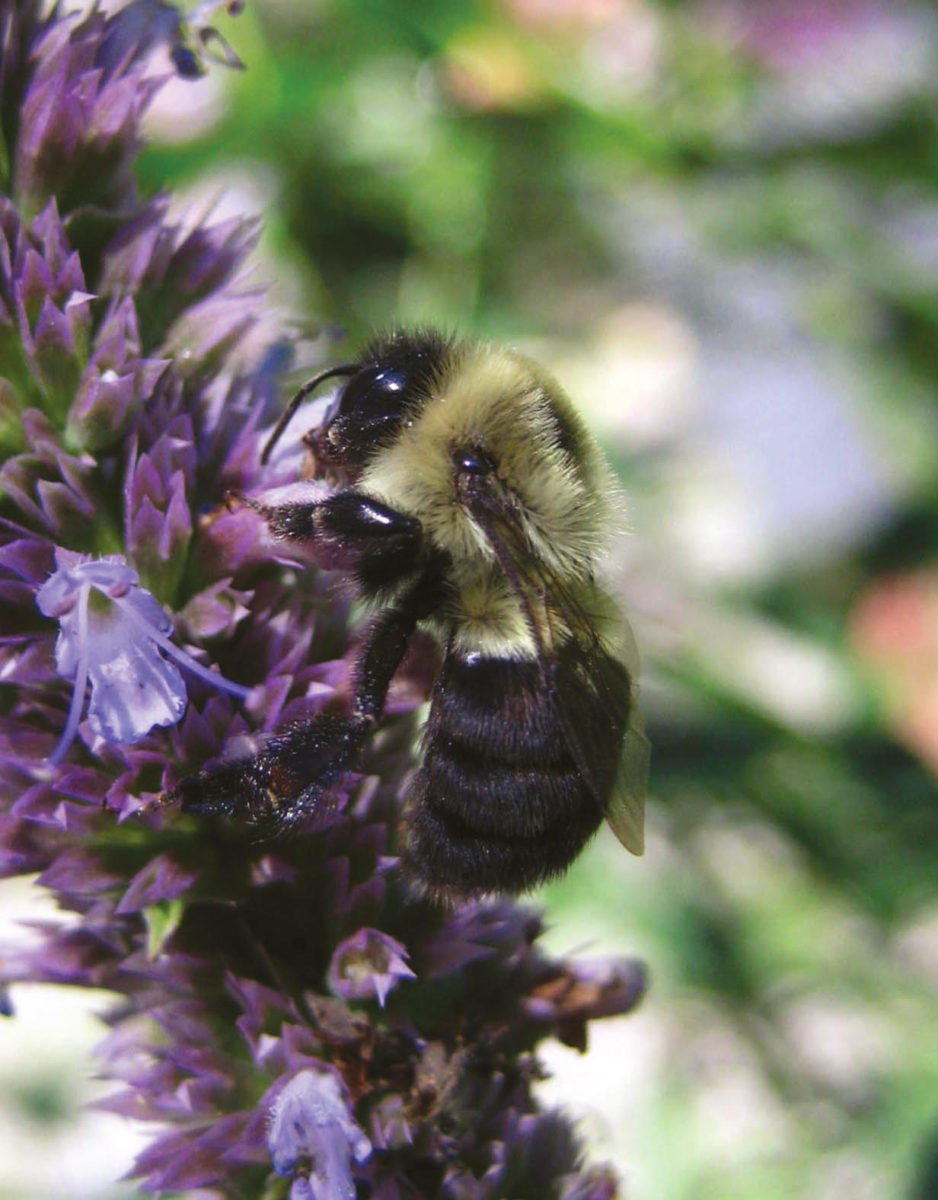Bumble bees commonly pollinate over 25 crops worldwide, including cranberries, blueberries, strawberries, plums, zucchinis, melons, sweet peppers, tomatoes, as well as seed crops like alfalfa, red clover, cotton, and sunflower (see sidebar). While some crops may achieve sufficient pollination with only bumble bees present, others may achieve greatest pollination with a combination of bumble bees and other pollinators. Bumble bees can be used for pollination both in greenhouses and outdoors.

In the Greenhouse
Since greenhouses are enclosed environments, bumble bees must be supplied by domesticated colonies. In eastern North America, the species Bombus impatiens is still readily available for purchase for use in greenhouses (Figure 5.5).
In greenhouses, vents can be screened to prevent bee loss. Some greenhouses use UV-excluding film to reduce heat. Bumble bees see into the UV range and may use information from UV light for orientation. This may interfere with bumble bees’ foraging patterns, though they will still forage and pollinate even with UV light excluded. Keep bumble bee colonies in the shade. Bumble bee colonies are usually insulated from high air temperatures by nesting in the ground. Temperatures over 90°F (32.2°C) can be damaging to developing brood. Exposure of bumble bees to pesticides used in greenhouses can be mitigated by closing the entrance to the bee colony before pesticides are applied. If the nest entrance is closed at night, most bees should be within the hive.
In the Field

There are two basic methods to use bumble bees for pollination in the field. The first is to rely on wild populations of bumble bees. This will be most effective if the field is relatively small and located in a diverse landscape, including undisturbed areas. Clearly, there must be a strong population of bumble bees in an area before they can be relied upon for pollination. Timing of crop bloom is also an important factor. In early spring, only queens will be out foraging. Once these queens establish nests, the number of available bees will drastically increase. One queen can produce colonies of 50 to 800 workers. By midsummer, bumble colonies should be well established with strong worker populations available for pollination. The landscape can be altered to encourage native bumble bees. One simple solution is to leave areas unmowed to provide better nesting habitat. Surrounding areas can be planted with flowers that provide a constant progression of blooming flowers, so that bumble bees are provided with the nectar and pollen they need to support each stage of their colony life cycle.
The second method is to use domesticated bumble bee colonies. There are several commercial producers of bumble bees that provide colonies year-round. These colonies can appear to be costly, but when the benefits of increased yield and fruit quality are taken into account, they are usually an economically beneficial option. You can also raise bumble bees yourself. This will require investments of equipment, space, and time. The rewards include not only pollinators for your crops, but a chance to get to know these fierce, humble creatures more intimately and learn more about how they live.
